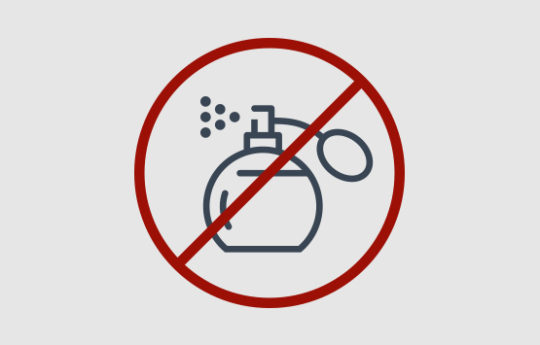There are a wide range of products on the market that are offered for odor removal, but many of these products contain perfume. It may be camouflaged on the label as fragrances or essential oils, but what they all have in common is that they "deodorize" by masking the bad smell with other fragrances, contaminating the indoor environment with not only the bad smell, but now also with often highly allergenic fragrances. This is documented by many of the Danish EPA's projects where the content of air fresheners, fragrance balls etc. has been analyzed.
When working with odor remediation, damage service companies are obliged to use the least hazardous products according to the Working Environment Act to ensure a good working environment. Another side of the coin is that they don't want to leave residual chemistry such as perfume in the homes they deodorize, as it contaminates people's indoor environment, as mentioned above.
Chlorine dioxide technology - the chemical approach
One of the ways in which perfume can be avoided in an odor eliminator is through the use of chlorine dioxide technology. Instead of camouflaging the odor with fragrances, chlorine dioxide attacks and solves the real problem by breaking down the organic molecules that cause the bad smell. Chemically speaking, it is an active substance that breaks down the odorous substances by oxidizing and burning them to pieces. And when the odorants are dead, they turn into salt and oxygen, leaving no chemical residue in people's homes.
Chlorine dioxide for odor remediation is available in both ProtoxHysan as a liquid or gas generating solid in ProtoxAbScent the bag. The choice of method depends on the type of task.
Enzyme technology - the biological approach
Unlike the chemical process with chlorine dioxide, there is an enzyme technology, which is a more biological process. According to John Lundsgaard, Technical Manager, Chemist and Biologist at Protox, the enzyme technology uses bacteria that are nature's own invention, which create enzymes that break down the odorants by eating them.
"When we eat, we have enzymes in our stomachs and intestines that break down the food into something that can go into the bloodstream and be transported to the cells. When we have enzymes that attack odorants, or the substances that sit and release the smell, it gets broken down into non-odorous substances - at best carbon dioxide and water - if it gets broken down completely. And here we use nature's own invention, which is bacteria that make enzymes that break down, live and eat the odorants. In simple terms, the bacteria gobble up the substances and use their enzyme systems to break them down so that the odor disappears," explains John..
Where enzyme technology also differs from chlorine dioxide is that in liquid form it does not enter and bleach the areas where products using the technology are used. This is an area that has been a challenge for many bodyshops when cleaning items with "soft" surfaces such as upholstered furniture. The product is now available here Protox Odorlessdeveloped using the enzyme technology.
Read also the article "Protox Odorless for cleaning movables".
